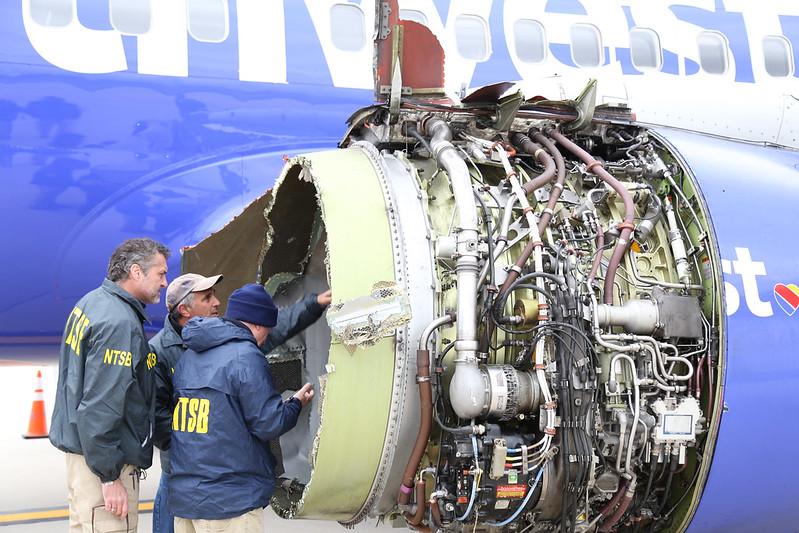
The NTSB wants details to support the FAA’s conclusion that current certification rules adequately protect engine nacelles from posing unacceptable flight-safety risks when a fan blade fails, pointing to a European Union Aviation Safety Agency (EASA) decision to change its regulations following a similar review.
FAA’s review, conducted in response to a 2019 NTSB recommendation, found that while airframe manufacturers would benefit from more specific guidance on how to comply with the regulations, the rules themselves—contained in Part 25—are sufficient. EASA’s review of similar provisions—also at NTSB’s urging—led the European regulator to propose updating both airframe and engine standards. The safety board wants the FAA to explain why the U.S. regulations are adequate while Europe’s are being updated.
“Specifically, we would like to know if the specifications contained in Part 25 related to protecting the airplane against a fan-blade-off event explicitly address the structural integrity of secondary structure elements (including engine nacelle elements) and, if not, how you intend to address this concern,” the board wrote in an early December letter to FAA Acting Administrator Billy Nolen. “Additionally, please clarify any significant differences between your Part 25 regulations and EASA’s CS-25 provisions that support your decision to not modify Part 25 regulations.”
The NTSB’s recommendations, which included redesigning 737 Next Generation nacelle parts, came from a probe into an April 2018 inflight engine failure onboard a Southwest Airlines Boeing 737-700 that began with a cracked CFM56-7B fan blade. Pieces of the broken fan blade struck the fan case, instantly deforming it. The resulting loads started a chain of events that included pieces of engine inlet and fan cowl breaking away and striking the airframe. One piece of fan cowl debris struck a window, leading to one passenger fatality, investigators determined.
Reviews of the 737-700 and CFM56-7B certification programs, both of which concluded in the mid-1990s, determined Boeing and CFM International could not have foreseen the chain of events using then-accepted methodology. But advancements in analytical modeling means manufacturers have a more complete picture of possible failure scenarios. Such developments combined with risks underscored by the April 2018 accident and several other occurrences prompted NTSB to recommend regulators revisit certification standards for airframes, which include nacelles, and engines.
EASA’s review of airframe certification standards led to new special conditions that target damage during a sustained “engine imbalance” scenario, such as when a fan blade breaks but the fan continues to rotate, or windmill, even after it is powered off.
Its engine approval review prompted regulatory changes, introduced in draft form in November 2021.
“The potential release of uncontained debris in the engine forward and rearward directions is not sufficiently addressed,” EASA said in the draft rule. While its regulations call for engine and airframe manufacturers to collaborate on ensuring out-of-balance fan blades do not pose unacceptable risk, “it appears that the displacements and loads transmitted to the engine nacelle structure (certified at aircraft level) have not been sufficiently addressed during the certification of some engines and aircraft,” EASA added. Its draft rule targets several areas, including compressor and turbine blade failures and ice protection.
The NTSB acknowledged that the FAA has not reported back on its Part 33 engine certification rule review. However, the board asked the FAA to “please explain how your current regulations address the issues outlined” in EASA’s proposed rule.





